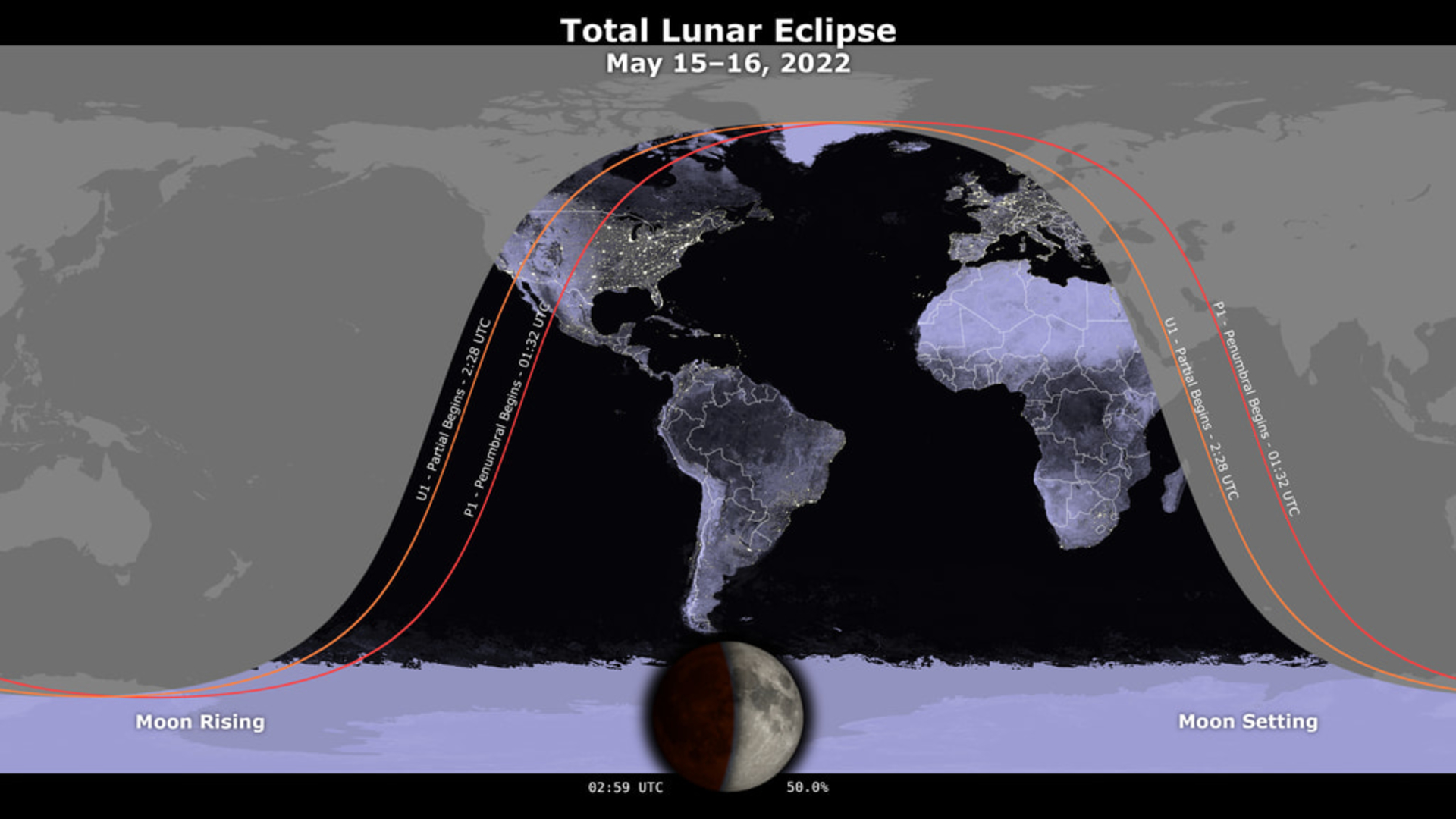What Time Is the Super Blue Blood Moon in Oklahoma
The Super Flower Blood Moon eclipse of 2022 has begun!
Editor's note: The total phase of the Super Flower Blood Moon lunar eclipse has ended. You can read our wrap story on the first total lunar eclipse of 2022 .
The first total lunar eclipse of 2022 has arrived, with the Super Flower Blood Moon expected to thrill skywatchers across the nightside of Earth.
This eclipse overnight tonight and early Monday (May 15 to 16) takes place during the so-called Flower Moon, the May full moon, named as it coincides with the spring blooming season in America. It's also a supermoon tonight, making this the Super Flower Blood Moon of May 2022.
On the U.S. East Coast, the spectacle began at 9:32 p.m. on Sunday (May 15; 0132 GMT on May 16), as the moon entered the penumbra, the lighter part of Earth's shadow, which occurs when Earth only partially obstructs the sun.
Related: How to watch the Super Flower Blood Moon lunar eclipse online

Within an hour, the whole moon will be covered with the penumbra and the so-called partial eclipse will begin, according to Time and Date (opens in new tab). The moon will then gradually transition into the umbra, the darkest shadow of Earth with no view of the sun.
As the moon makes its way across the umbra, skywatchers will be able to see the round shadow of our planet eating up a growing slice of the full moon. At 11.29 p.m. EDT, about an hour after the beginning of the partial eclipse and two hours after the beginning of the penumbral phase, the moon will be fully covered by the planet's dark shadow. However, it will not disappear from the sky at that moment. Instead it will turn red, an effect caused by the light scattered by Earth's atmosphere, which inspires the blood moon moniker given to a fully eclipsed moon.
oohh it's happening! #LunarEclipse pic.twitter.com/P1pW4mPl4yMay 16, 2022
Lunar Eclipse 2022. #Clouds rolled in and ruined my shot. 5/15/2022 #lunareclipse2022 #lunareclipse #moon @News12BX @ABC7NY @NY1weather @News12Weather @StormHourMedia @Storyful @NBCNewYork @CBSNewYork pic.twitter.com/IiVg5ho3hRMay 16, 2022
Loving this #LunarEclipse 🤗✨ pic.twitter.com/QL97GSLtxmMay 16, 2022
It will take almost an hour and a half for the moon to work its way through the umbra. It will reach the deepest, middle portion of the shadow at 12.11 a.m. EDT on Monday (May 16). The total eclipse will end at 12.53 a.m. EDT, after which the round shadow of Earth will slowly recede, revealing a growing slice of the moon only softly shaded by the penumbra. The moon will leave the umbra entirely at 1.55 a.m. EDT; the subsequent penumbral eclipse will last for another hour.
Observers in other time zones need to adjust for the time difference. The entire Flower Moon eclipse is observable from the whole of South and Central America, and from the eastern portion of North America. The western part of the U.S. will still get to see the total eclipse but will miss parts of the less spectacular penumbral eclipse, according to Time and Date.
The westernmost parts of Africa will get to see the total eclipse, while most of Europe, with the exception of Spain, will only experience the partial eclipse.

The next total lunar eclipse, on Nov. 8, 2022, will peak above the Pacific Ocean, favoring skywatchers in the U.S. West, Eastern Asia and Australia.
There will also be a partial solar eclipse on Oct. 25, visible from Europe, the Middle East, the Northeast of Africa and western Asia.
If you plan to observe or photograph the lunar eclipse, you can find some useful tips in our guide. And you can also share your best snaps with us.
Editor's Note: If you snap an amazing lunar eclipse photo and would like to share it with Space.com's readers, send your photo(s), comments, and your name and location to spacephotos@space.com.
Follow Tereza Pultarova on Twitter @TerezaPultarova . Follow us on Twitter @Spacedotcom and on Facebook .
Join our Space Forums to keep talking space on the latest missions, night sky and more! And if you have a news tip, correction or comment, let us know at: community@space.com.
Source: https://www.space.com/super-flower-blood-moon-eclipse-2022-begins
0 Response to "What Time Is the Super Blue Blood Moon in Oklahoma"
Post a Comment